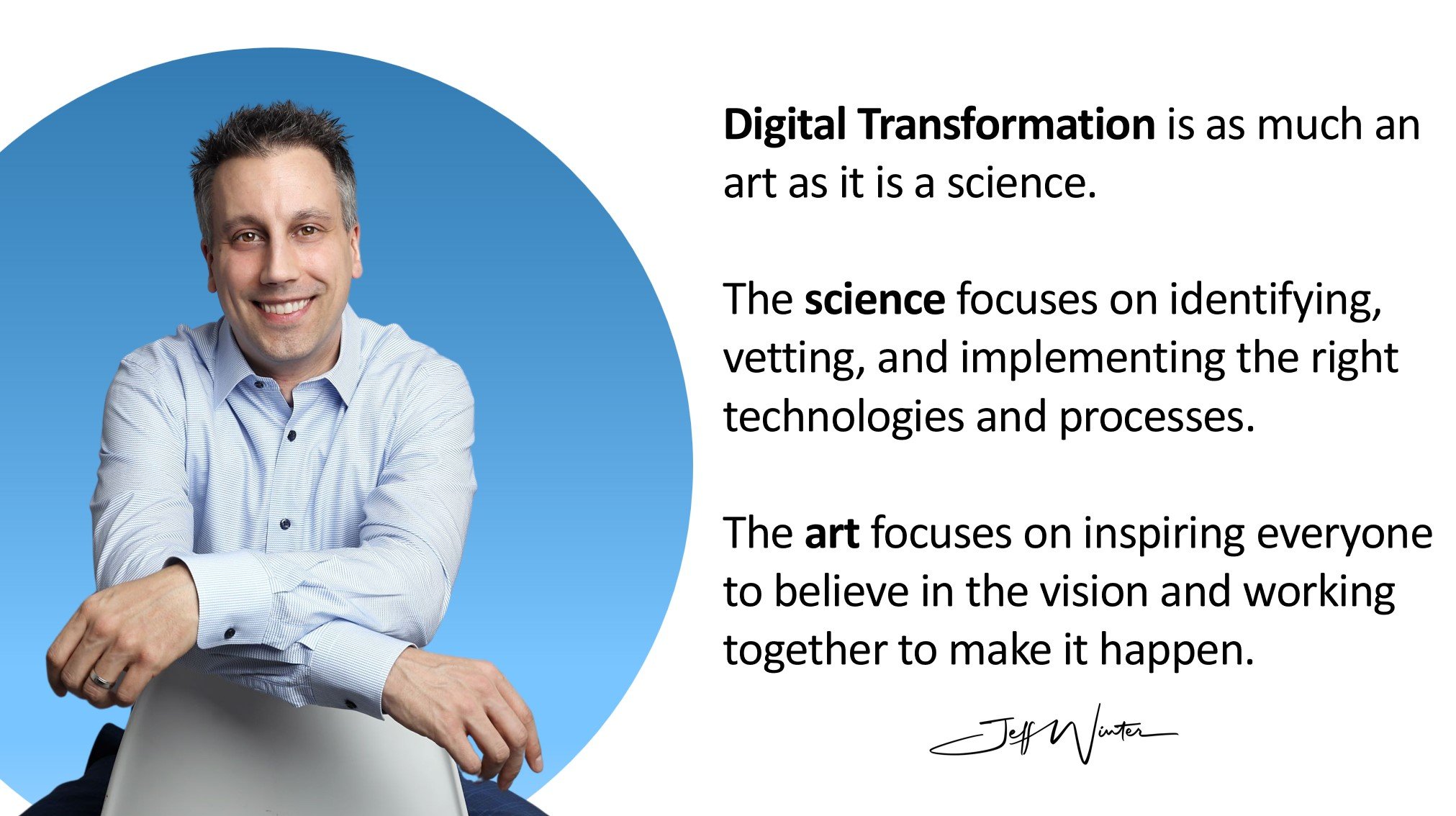The Art & Science of Digital Transformation
When we peel back the layers of digital transformation, it's clear that it's not just a technical endeavor. Yes, the 'science' part is essential – it's the rigorous process of selecting and integrating cutting-edge technologies and streamlined processes. This is the side of transformation that can be systematically learned, with a clear pathway laid out by academic studies or specialized certification programs. However, that's only half the story. The 'art' of digital transformation is subtler, yet equally crucial. It’s a skill honed through real-world experiences, reflecting the nuanced understanding that comes from years of navigating the workplace. This 'art' is about stirring a collective enthusiasm, fostering an environment where every individual is invested in the digital journey. It's about crafting a shared narrative that resonates with the team, ensuring that the drive for change is not just adopted but embraced with conviction.
A successful digital transformation is where these two halves – the precision of science and the flair of art – converge. It requires a symbiotic relationship between the tangible aspects of technology and the intangible dynamics of human collaboration. Here, leaders must be both strategists and storytellers, technologists and team builders. They need to be capable of not only selecting the right tools but also of painting the big picture, drawing everyone into a shared vision that’s vivid and compelling.
The Science of Digital Transformation
The 'science' aspect of digital transformation is all about the methodical and structured approach to implementing new technologies and processes. This is the part that can be learned and replicated through studies and certifications. Here are four areas of focus for the science of digital transformation:
Technology Selection and Integration
This involves identifying the right technologies that align with the company's strategic goals. It requires a deep understanding of the available tools and their potential impact on the business. Integration is crucial to ensure these technologies work seamlessly with existing systems.
Process Optimization
Streamlining processes to eliminate inefficiencies is a key part of digital transformation. This involves mapping out current workflows, identifying bottlenecks, and reengineering processes to be more efficient and effective using digital tools.
Data Management and Analytics
Effective data management is at the heart of digital transformation. This includes collecting, storing, and analyzing data to gain insights that drive business decisions. Advanced analytics and machine learning can provide deeper insights and predictive capabilities.
Cybersecurity and Compliance
As companies adopt more digital tools, ensuring the security of data and systems becomes paramount. This involves implementing robust cybersecurity measures and ensuring compliance with relevant regulations and standards.
The Art of Digital Transformation
The 'art' aspect is about the human elements that drive digital transformation. It’s about fostering a culture of innovation, engagement, and collaboration. Here are four areas of focus for the art of digital transformation:
Leadership and Vision
Successful digital transformation starts with a clear vision from leadership. Leaders need to articulate a compelling vision that inspires and motivates the team. They must be storytellers who can convey the purpose and benefits of the transformation journey.
Change Management
Managing change effectively is critical. This involves preparing, supporting, and helping individuals and teams to transition to new ways of working. Effective change management addresses the emotional and psychological aspects of change.
Employee Engagement and Empowerment
Engaging employees in the transformation process is vital. This means involving them in decision-making, providing the necessary training, and empowering them to take ownership of new tools and processes. An engaged workforce is more likely to embrace and drive change.
Cultural Transformation
Digital transformation often requires a shift in organizational culture. This involves fostering a culture that values innovation, agility, and continuous improvement. It’s about creating an environment where experimentation is encouraged, and failure is seen as a learning opportunity.

